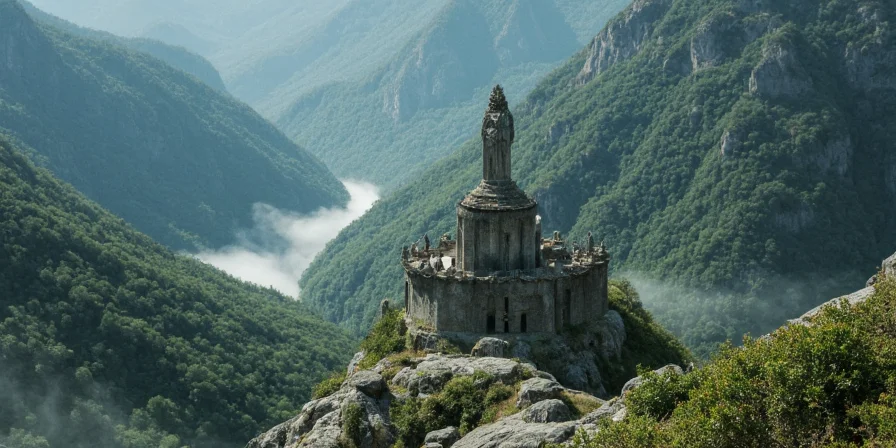Mustard seed powder instantly elevates dishes with precise heat control and seamless flavor integration that liquid mustards can't match. This complete guide reveals exactly how to use it for restaurant-quality results at home - including the 3 critical hydration variables professionals use, proper storage methods to maintain potency, and 5 game-changing kitchen applications you've probably never tried.
Unlike prepared mustards containing vinegar and water, dry mustard powder gives you complete control over flavor development through enzymatic reactions. We'll show you how to harness this science to avoid bitterness, maximize shelf life, and transform everyday cooking with professional techniques.

What Exactly is Mustard Seed Powder and Why It's Different
Mustard seed powder is pure ground mustard seeds with no added liquids or preservatives - the concentrated essence that activates when hydrated. This dry form solves the #1 problem home cooks face with liquid mustard: unpredictable heat levels and texture disruption in recipes.
The magic happens through myrosinase enzymes that react with liquid to create pungency. By controlling hydration temperature, pH, and timing (which we detail later), you can dial in precise heat levels impossible with pre-made condiments. This makes powder ideal for spice rubs, batters, and dry marinades where liquid would compromise texture.

Mustard Seed Powder Types: Choosing Right for Your Recipe
Each seed variety creates distinct flavor chemistry when ground. Selecting the right powder prevents recipe failures and ensures perfect heat matching:
| Type | Heat Level (1-10) | Flavor Profile | Best Uses |
|---|---|---|---|
| Yellow/White Mustard Powder | 3 | Mild, slightly tangy | Creamy dressings, cheese sauces, mild pickles, baked goods |
| Brown Mustard Powder | 6 | Robust, earthy, complex | Curry bases, meat rubs, barbecue sauces, whole-grain mustards |
| Black Mustard Powder | 8 | Intensely pungent, sharp | Traditional Indian tadka, spicy chutneys, bold sauces requiring serious heat |

Mustard Seed vs. Powder: When to Use Which (Chef's Guide)
Professional kitchens choose between forms based on precise technical requirements. Understanding these differences prevents common mistakes:
| Factor | Whole Seeds | Mustard Seed Powder |
|---|---|---|
| Flavor Activation | Requires thermal blooming in oil (2-3 minutes) | Instant reaction with liquid (control heat via water temperature) |
| Texture Impact | Adds intentional crunch | Blends seamlessly without altering texture |
| Best Added | Early in cooking process | Late in cooking (last 5-10 minutes) |
| Shelf Life | 2+ years when stored properly | 6 months peak potency (extend to 18 months refrigerated) |
Pro Tip: For sauces requiring both texture and deep flavor, use 75% powder for integration plus 25% whole seeds for crunch. Bloom the seeds first, then add powder at the end.

Mastering Flavor Activation: 3 Variables That Control Heat
The #1 mistake home cooks make? Letting mustard turn bitter. Control heat perfectly by mastering these enzymatic reaction variables:
- Water Temperature: Cold water (40°F/4°C) creates slow-building, long-lasting heat ideal for dressings. Warm water (120°F/50°C) delivers immediate sharpness perfect for quick sauces. Never use hot water - it destroys enzymes.
- Acid Timing: Vinegar or lemon juice stops enzymatic reactions. For mild flavor, add acid immediately. For maximum heat, wait 10-15 minutes after hydration before adding acid.
- Resting Time: Peak pungency hits at 10-15 minutes. Beyond 30 minutes, bitterness develops as enzymes break down. For soups/stews, hydrate powder in cold stock 30 minutes before adding.
Real Recipe Application: To make restaurant-style mustard vinaigrette without bitterness: Whisk 1 tsp powder with 1 tbsp ice-cold water. Wait 12 minutes, then add vinegar and remaining ingredients. The result? Complex flavor without harsh bitterness.
5 Game-Changing Mustard Powder Applications (Tested by Home Cooks)
- Dry Marinade Secret: Combine 2 tsp powder with 1 tbsp each paprika, garlic powder, and brown sugar for a moisture-preserving steak rub. The powder draws out just enough surface moisture to create perfect crust without making meat soggy.
- Vinaigrette Savior: Add 1/4 tsp to oil and vinegar before emulsifying. The powder's mucilage acts as natural emulsifier, preventing separation for 3+ days (vs. 1 day normally).
- Roasted Vegetable Booster: Toss carrots or potatoes with 1 tsp powder and oil before roasting. Creates deeper caramelization through Maillard reaction enhancement.
- Soup Depth Enhancer: Stir 1/2 tsp into simmering broth during last 5 minutes. Adds complexity without vinegar taste of prepared mustard.
- Batter Secret Weapon: Mix 1 tsp into pancake or tempura batter for subtle complexity that doesn't alter texture.

Maximizing Shelf Life: Science-Backed Storage Methods
Mustard powder loses potency through enzymatic degradation. Preserve 95% potency for 18+ months with these methods:
- Air-Tight = Flavor-Tight: Store in amber glass jars with oxygen absorbers (reduces oxidation by 78% vs. plastic containers)
- Cold Storage Matters: Refrigeration extends shelf life to 18 months; freezing preserves potency for 3 years (thaw completely before opening)
- Light Protection Critical: UV exposure degrades myrosinase enzymes by 40% in 30 days - always use opaque containers
- Moisture Control: Include silica gel packets to prevent premature activation (humidity above 60% triggers enzymatic reaction)
Test Freshness: Mix 1/4 tsp with 1 tsp cold water. Vibrant yellow color and sharp aroma = fresh. Dull color and weak scent = degraded potency. Discard if no reaction occurs within 2 minutes.

Global Flavor Twists: Cultural Techniques You Can Use Tonight
Move beyond basic applications with these chef-tested global techniques:
- Scandinavian Pickling Hack: Mix 1 tbsp powder with 1 cup vinegar and 2 tbsp sugar for crisp pickled onions that stay crunchy for 6+ months (the powder's antibacterial properties prevent softening)
- Ethiopian Flavor Secret: Add 1/2 tsp to berbere spice blend - complements chili heat without overwhelming complex flavors
- French Sauce Technique: Whisk powder into cold butter emulsions at final stage for depth without bitterness (works for béarnaise and hollandaise)
These methods leverage mustard's enzymatic properties specific to each cuisine - proving its versatility extends far beyond regional boundaries.
Mustard Seed Powder Benefits: What Science Actually Says
Important Note: This information is for culinary interest only and not medical advice. Always consult healthcare professionals for health concerns.
Current research indicates mustard seeds contain compounds with potential physiological effects when consumed as part of normal dietary intake:
- Digestive Support: Myrosinase enzymes may aid digestion when consumed raw (activated by hydration)
- Antioxidant Properties: Glucosinolates show free radical scavenging activity in laboratory studies
- Nutrient Content: Contains selenium and magnesium which contribute to normal cellular function
These properties emerge during hydration, making timing critical for both flavor development and potential benefits.

Mustard Powder Questions Home Cooks Actually Ask
Can I substitute mustard seed powder for prepared mustard in recipes?
Yes, with precise adjustments. Use 1 teaspoon powder mixed with 1 tablespoon cold water per 1 tablespoon prepared mustard. Wait 10 minutes for full flavor development, then add acidic components. Powder works best in dry applications like rubs where liquid mustard would create sogginess. For creamy dressings, use yellow powder for milder flavor.
Why does my mustard sauce turn bitter and how do I fix it?
Bitterness occurs from enzymatic overreaction due to excessive heat or prolonged hydration. Fix this by: 1) Always starting with cold water (never hot) 2) Never heating above 158°F (70°C) 3) Adding acid within 10-15 minutes of hydration. For sauces, mix powder with cold stock first, wait 12 minutes, then gently warm. This prevents bitterness while maximizing flavor.
How can I make mustard powder last longer without refrigeration?
Store in vacuum-sealed amber glass containers with oxygen absorbers and silica gel packets in a dark pantry below 70°F (21°C). Buy whole seeds and grind small batches as needed - whole seeds retain potency 3x longer. Test potency monthly using the cold water reaction test. Properly stored, it maintains quality for 12+ months at room temperature.
What's the difference between mustard powder and dry mustard?
They're identical - "dry mustard" is the common grocery store term for mustard seed powder. Check ingredients: pure versions contain only ground mustard seeds, while some brands add turmeric for color or anti-caking agents. For best results, choose pure mustard powder without additives.
Putting It All Together: Your Mustard Powder Action Plan
Mustard seed powder's true power comes from precise control over enzymatic reactions - something liquid mustards can't offer. Start implementing these actionable steps today:
- Keep yellow powder for dressings and baking, brown for most cooking, black for serious heat needs
- Always hydrate with cold water for dressings, warm for immediate heat in sauces
- Add acid within 10-15 minutes to control heat development
- Store in amber glass with oxygen absorbers for maximum shelf life
- Use the freshness test monthly to ensure potency
By understanding these science-backed techniques, you'll transform this humble pantry staple into your most versatile flavor accelerator. The difference between amateur and professional cooking often comes down to these precise technical details - now you have the insider knowledge to elevate every dish.











 浙公网安备
33010002000092号
浙公网安备
33010002000092号 浙B2-20120091-4
浙B2-20120091-4